
| 
| 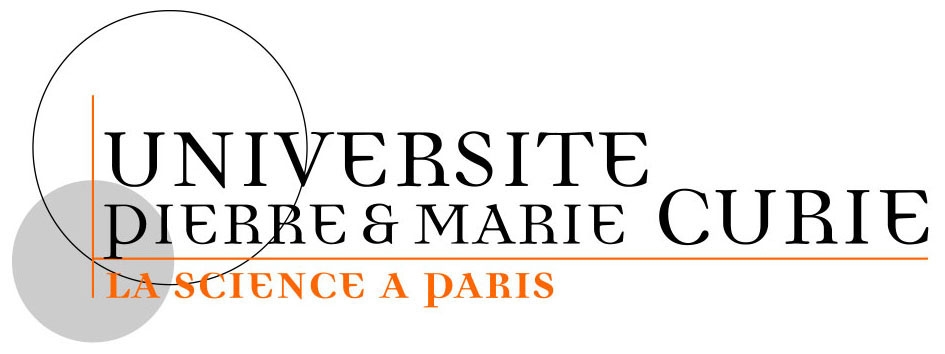
| 
|
The Triton stellar occultation of 20/21 May 2008 - results

| 
| 
| 
|
On 21 May 2008, and for more of 3 mn around 01:40 UT, Neptune's main satellite, Triton, occulted a 13.5 magnitude star in the constellation of Capricornus. This unique event was the first of its kind after almost eleven years, as the last ground-based recorded occultation by Triton dates back to July 1997, while another occultation by the satellite was monitored by the Hubble Space Telescope in November 1997.
The event was successfully recorder from the "Internationale Amateur-Sternwarte" (IAS Observatory), an amateur facility based at Hakos Farm in central Namibia, from Tivoli Farm, also in central Namibia, and from two stations in La Réunion, a French island in the Indian Ocean.
The event occurred close to Neptune's station in the sky, when the planet seems to stop and reverse its motion, due to the combined orbital motion of the planet and Earth around the Sun. The station was actually taking place on May 26, and because Triton's orbital period around neptune is about 6 days, the resulting satellite motion in the sky is remarkably twisted, see below:
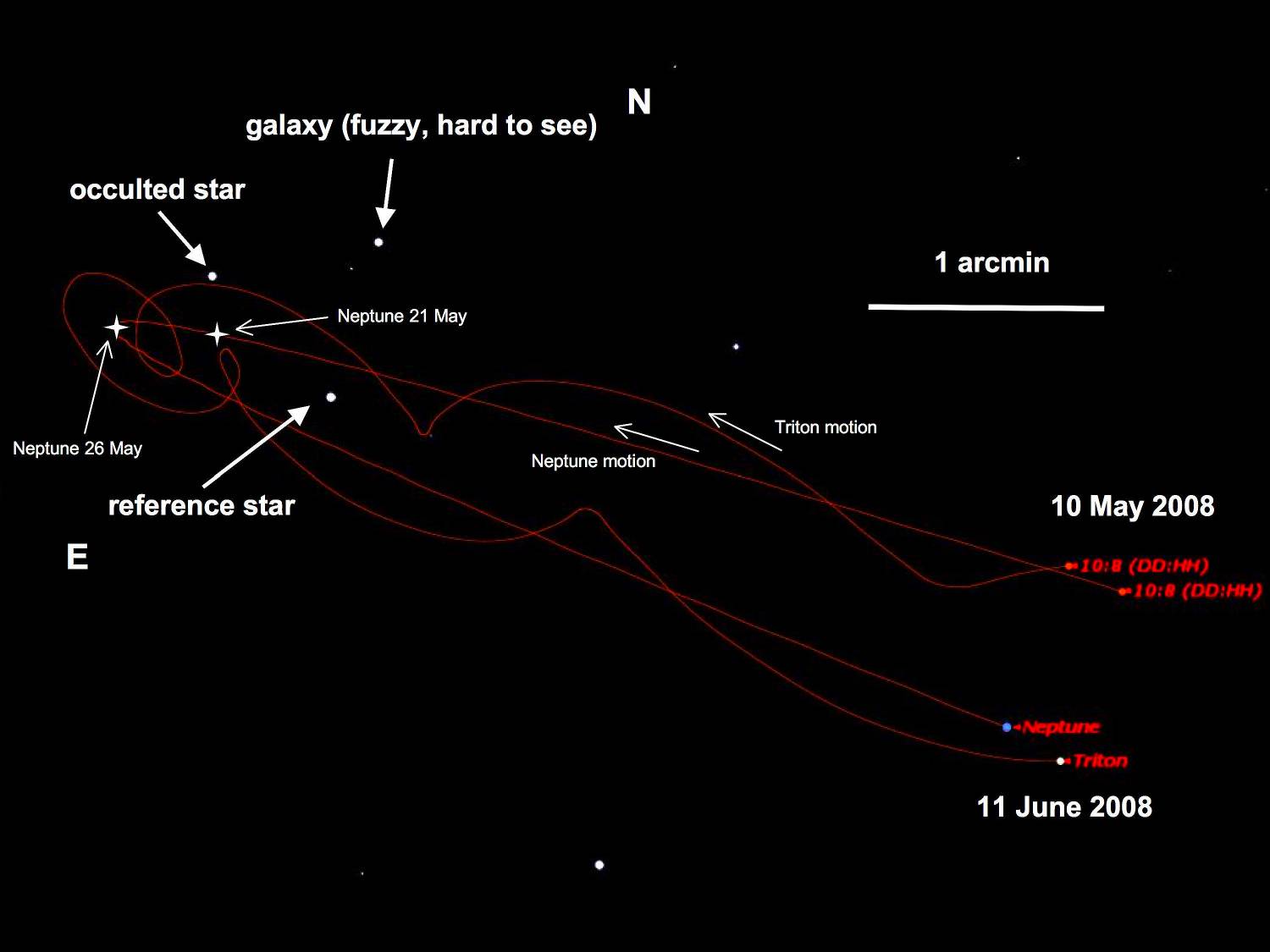 |
Triton is undergoing an "extreme solstice", where the southern hemisphere of the satellite is being illuminated by the Sun, after centuries of winter time. In 2000, the solstice was actually attained: the sub-solar latitude reached 50 degrees south, for the first time in 650 years. This long period is the result of an interplay between Neptune's revolution around the Sun (165 years) and Triton's orbit precession period (680 years). Triton's atmosphere was only observed during the 1989 Voyager flyby, and a few times from Earth in the 1990's through stellar occultations. This is to say that the 2008 occultations was most timely! (More on Triton can be learned on this SWRI page)
Goals were (1) monitoring Triton atmospheric pressure, to detect for instance a drastic increase of pressure due to this extreme solstice, (2) detect hazes through multi-wavelength observations and (3) detect the central flash, from which a wind regime in Triton's atmosphere.
The event was observed, among others, with the 50cm telescope the IAS Hakos Observatory equipped
with a "QHY6-255" camera
(see left and the QHY CCD page)
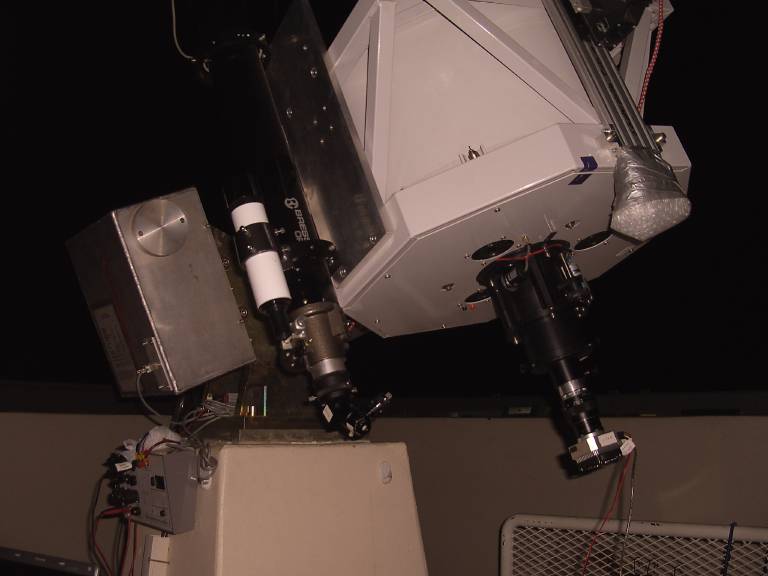

 and with the 45cm telescope at the same site, equipped with a Raptor photonics "Merlin" camera
(see right and the Raptorphotonics page).
and with the 45cm telescope at the same site, equipped with a Raptor photonics "Merlin" camera
(see right and the Raptorphotonics page).
The image below was taken during the event with the Merlin camera. It is 13x10 arcmin across, with north up and east left. Neptune is the bright object near the top, Triton and the occulted star are just above Neptune, while all the other objects are background stars or galaxies.
 |
Details of that image are shown below, with a ~4.5x4.5arcmin field of view better showing who is who.
 |
 |
The event occurred about 3 mn before the latest prediction updates, made a few days before the occultation by a Brazilian team of the Observatório Nacional and Observatório do Valongo, both in Rio de Janeiro.
The combined ligth from Triton and the star dropped by about 35%, meaning that the star flux dropped by about 70%, as Triton and the star had comparable fluxes. This drop is visible in the cartoon below, taken from the Raptor/Merlin camera.
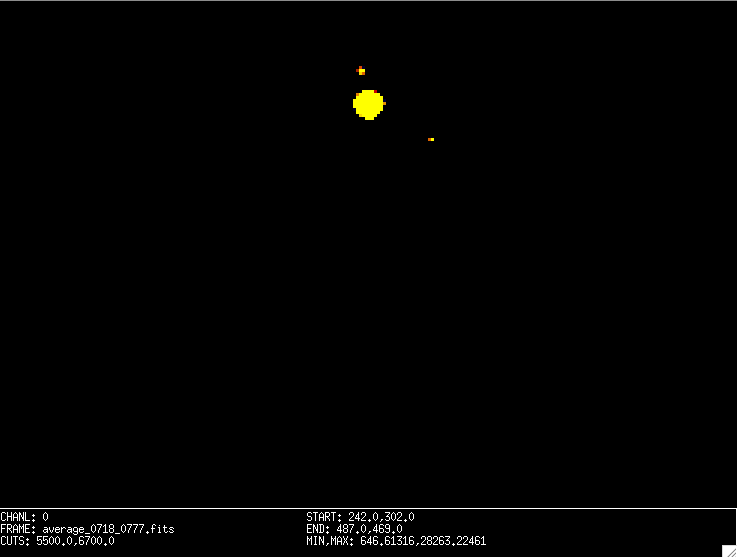 |
 |
 |
Preliminary data reductions provide the light curves below obtained at the 45cm (left) and 50cm (right) IAS/Hakos Observatory. Clearly visible is the gradual dimming of the star caused by differential refraction in Triton rarefied atmosphere. (The pressure levels probed during this occultation are typically 1 microbar). Combining those data with others obtained in Namibia and La Réunion will allow us to determine whether Triton's atmophere suffered changed since 1997.
 |
 |
Right after the runs...
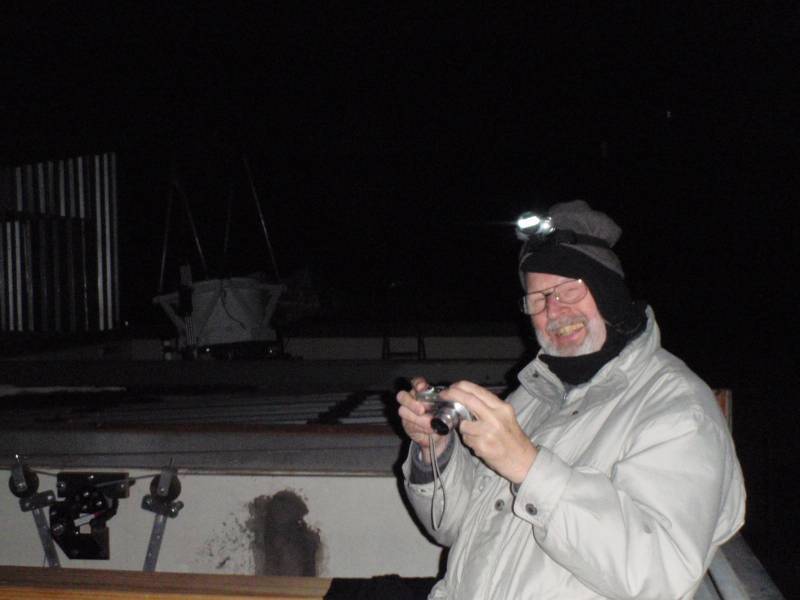 |
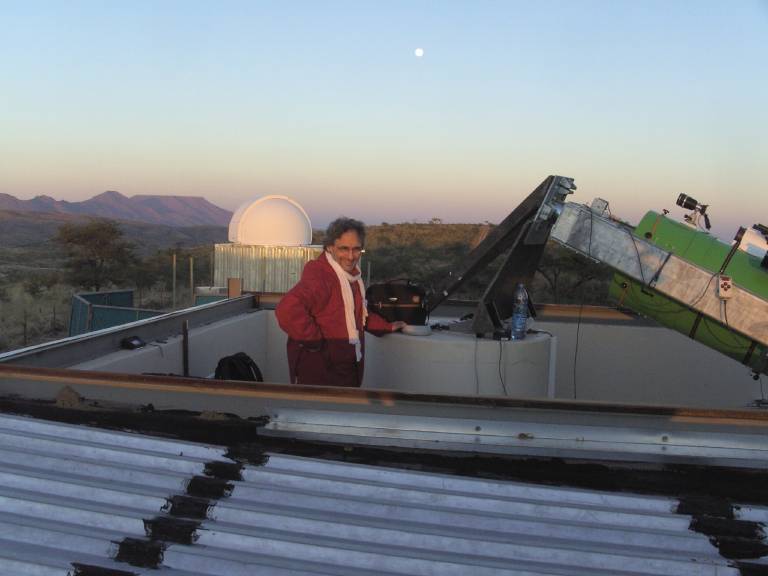 |
 |
Neighbors...
 |
 |
 |
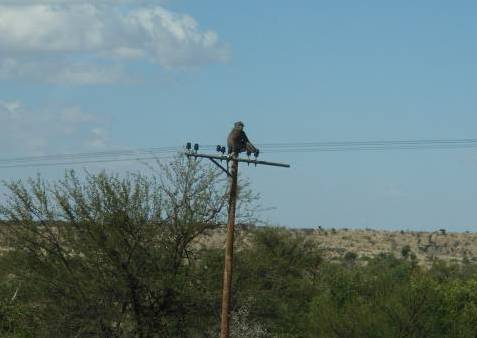 |
 |
For contacts, more information and/or comments, you can contact me by email at:
bruno.sicardy@obspm.fr